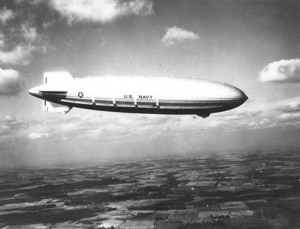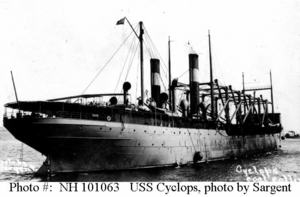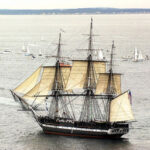If you were invited to play the game of free association and the phase “dirigible disaster” was mentioned what would be your first thought? My bet is you would instantly recall the black-and-white image of a large 1930s airship catching fire and crashing in a fiery ball before a scrambling ground crew. If your recollection for details was good, you might remember the names Hindenburg and Lakehurst, New Jersey. And perhaps a little voice inside your brain may also be replaying the phrase “Oh the humanity…” spoken by the emotionally shaken Herbert Morrison, who was recording the incident live.
The Hindenburg disaster is one of the first significant American calamities to have been captured live in both audio and visual form. The details of the tragedy you may be unaware of may include the date (May 6th, 1937), likely causes (lightning, static electricity, sabotage …take your pick) and the death toll (36, including one from the ground crew).
However the Hindenburg event has largely overshadowed a far greater dirigible disaster with double the fatalaties that occurred four years earlier after taking off from the very same Lakehurst Naval Air station. This event had a far greater impact on the future role of lighter-than-air craft in both military and civilian terms than the more familiar Hindenburg event.
Cast Off
At the time, the Akron was the world’s largest airship at 785 feet (think 2 ½ football fields) and it was capable of flying at a top speed of 80 miles per hour. Launched in 1931,the Akron was designed to have a cruising range of 12,000 miles; that’s two round trips from New York to Los Angeles.
At 7:30 p.m. on April 3, 1933 the Akron cast off her last lines tethering the airship to the Lakehurst mooring mast. A contingent of U.S. Navy personnel manned the ship including Rear Admiral William Moffett, chief of the Navy’s Bureau of Aeronautics. Its mission was to calibrate radio compass beacons along the east coast.
As night settled in, the ship headed west over the New Jersey Pines Barrens, down to Philadelphia, crossed the Delaware River, returned east over New Jersey and eventually headed out over the open ocean. The weather was unsettled with a storm brewing off in the east. Winds intensified, eventually blowing at 81 miles per hour with dangerous thunderstorms flanking the ship. In retrospect, this was the wrong time and wrong place to be needlessly testing radio beacons. This error in judgment would cost the lives of 73 officers and men.
Approximately 5 hours after departing from Lakehurst the massive structure crashed into the sea 30 miles due east of Little Egg Harbor, N.J. Amazingly, four survivors were plucked from the frigid April waters by the German tanker Phoebus, which noticed the Akron’s running lights just above the surface moments before the crash. One of the sailors rescued soon succumbed to the trauma, but 3 survived to later testify before a special hearing convened to determine the disaster’s cause.
Aftermath
The cause of the crash was later attributed to the intense storm. A confluence of downdrafts, gusty winds and pilot error combined to claim the lives of almost all on board.
Others believe the Akron was always cursed. They pointed to three previous accidents, including one which claimed the lives of two naval personnel. And if one needed further proof of bad omens, they could point to the Navy blimp J-3 sent out to aid in the Akron’s recovery efforts. Within 9 hours of the Akron crash this smaller blimp joined it under the sea with the loss of two additional men.
The crash of the Akron effectively closed the book on future military deployment of large lighter-than-air ships. Fixed wing aircraft were quickly developing and they would need to prove themselves dependable under all weather and battle conditions. They had their chance with World War II looming less than 8 years in the offing.





